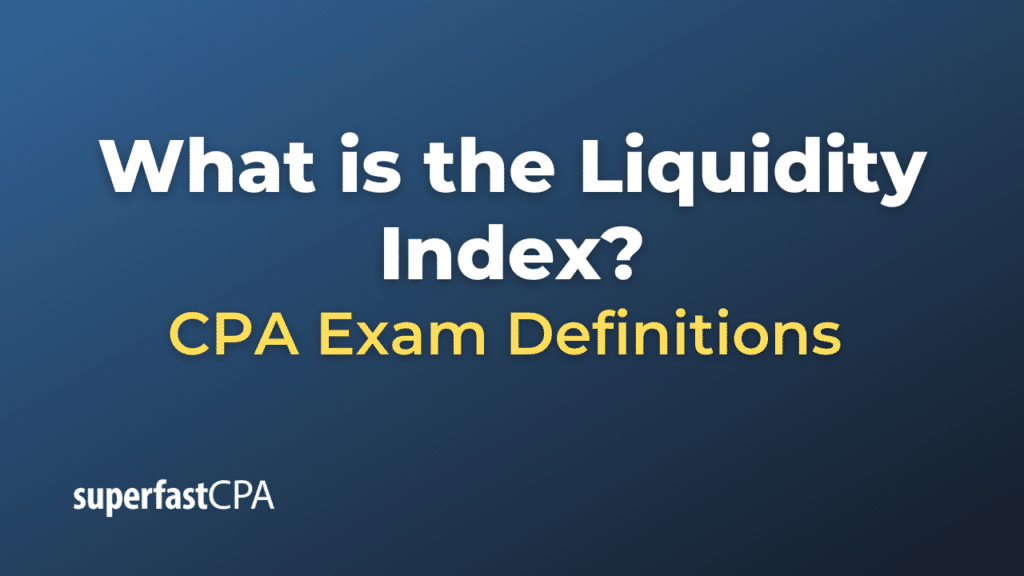Liquidity Index
A Liquidity Index is a metric used in finance to measure the liquidity of a security or a market. It can be used to determine how quickly an asset (like a stock, bond, or derivative) can be bought or sold without affecting its price.
The liquidity index is typically based on factors such as trading volume, bid-ask spread, and market depth. Higher values usually indicate greater liquidity. The specific formula and components of a liquidity index can vary depending on the context and the specific asset or market being evaluated.
For example, if a stock has a high daily trading volume and a small bid-ask spread, it would typically have a high liquidity index. This implies that large quantities of the stock can be bought or sold without significantly affecting its price.
Conversely, a stock with low daily trading volume and a large bid-ask spread would typically have a low liquidity index. This suggests that even small trades could significantly affect the stock’s price.
Knowing the liquidity index of a specific asset or market can be useful for investors and traders when planning their transactions. Highly liquid assets are generally easier to trade and may be preferable for investors who value flexibility and the ability to quickly convert assets into cash. On the other hand, less liquid assets might offer higher returns to compensate for the increased risk and difficulty of trading.
Example of the Liquidity Index
Let’s take a look at an example using stocks in the stock market.
Suppose you’re comparing two different stocks to decide which one to invest in. One of the factors you’re considering is liquidity. You look at the trading volume and the bid-ask spread for each stock to gauge their liquidity.
Stock A:
- Average daily trading volume: 1,000,000 shares
- Bid-ask spread: $0.01 (This is the difference between the highest price a buyer is willing to pay for a share (bid) and the lowest price a seller is willing to sell a share for (ask).)
Stock B:
- Average daily trading volume: 100,000 shares
- Bid-ask spread: $0.10
Based on these figures, Stock A would likely have a higher liquidity index. It has a higher trading volume, meaning that more of its shares are bought and sold each day, which generally makes it easier to buy or sell shares without significantly affecting the stock’s price. Also, Stock A has a smaller bid-ask spread, which means there’s less of a price difference between what buyers are willing to pay and what sellers are asking for.
On the other hand, Stock B has a lower trading volume and a larger bid-ask spread, which would likely result in a lower liquidity index. These factors suggest that it might be harder to buy or sell shares of Stock B without affecting its price.
It’s important to note that while liquidity is a crucial factor to consider when investing, it’s just one aspect to consider. Other factors, such as the company’s financial health, its future growth prospects, and the overall market conditions, should also be taken into account.













